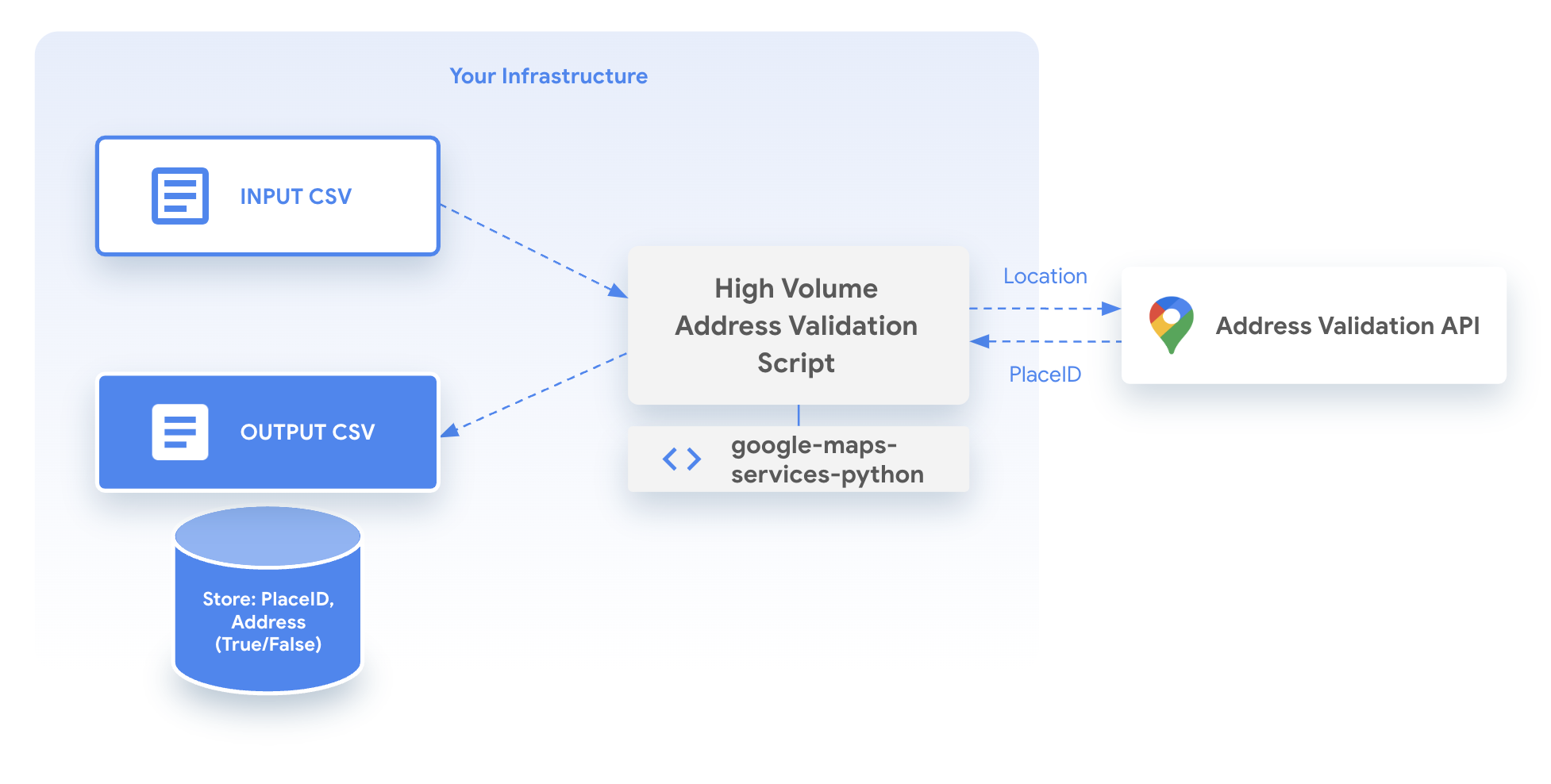Cel
W kilku poprzednich artykułach przedstawiliśmy koncepcję weryfikacji adresów o dużej liczbie zapytań i sposoby jej wykorzystania w różnych sytuacjach.
W tym artykule przyjrzymy się bibliotece Pythona, która pomoże Ci szybko rozpocząć wdrażanie weryfikacji adresów o dużej liczbie zapytań.
Najpierw przypomnijmy sobie artykuły dotyczące interfejsu Address Validation API w przypadku dużych ilości danych:
Używanie interfejsu Address Validation API do przetwarzania dużej liczby adresów pokazuje, jak używać weryfikacji dużej liczby adresów do testowania interfejsu API oraz do jednorazowej i cyklicznej weryfikacji adresów.
Wzorce projektowe walidacji adresów o dużej liczbie zapytań przedstawiają bibliotekę walidacji adresów o dużej liczbie zapytań i omawiają korzystanie z biblioteki Pythona w różnych środowiskach wykonawczych na platformie Google Cloud.
Na tej stronie znajdziesz informacje o tym, jak zacząć korzystać z biblioteki Python do weryfikacji adresów o dużej przepustowości.
Omówienie biblioteki Pythona
Ogólnie biblioteka Pythona działa w ten sposób:

Korzystanie z biblioteki Pythona
Pobierz i zainstaluj bibliotekę z GitHuba.
Więcej informacji o bibliotece i sposobie jej używania znajdziesz w pliku README.

